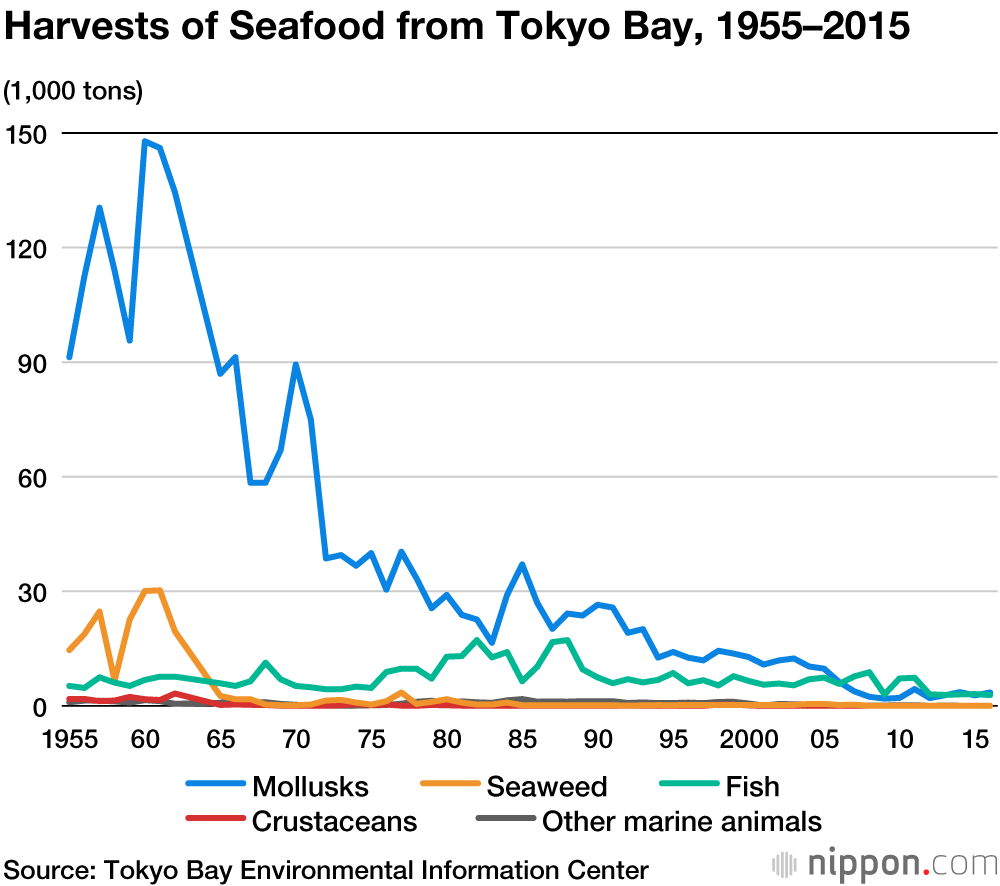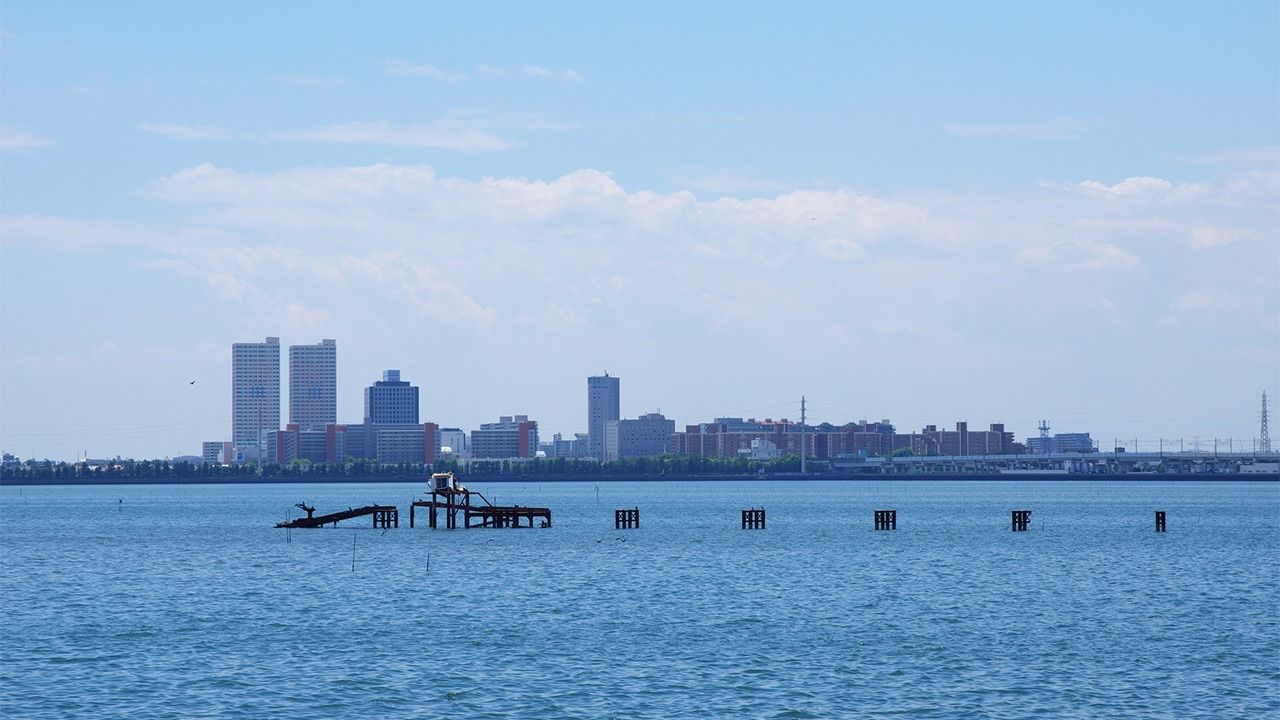
From Invasive Species to Local Specialty: Japan Embraces the Quahog Clam
Environment Culture Society- English
- 日本語
- 简体字
- 繁體字
- Français
- Español
- العربية
- Русский
Many of Japan’s best-loved dishes, including sushi, tempura, and grilled unagi, were developed by the street vendors of Edo (present-day Tokyo) with a view to delivering the bounty of Edo Bay to busy townspeople. The heart and soul of Edomae sushi, among other regional specialties, were the fish and mollusks that teemed in the shallow waters and tidal flats of what is now Tokyo Bay.
After World War II, the rich marine resources of Tokyo Bay fell victim to industrial development. In the 1960s and 1970s, vast portions of the bay were filled in to make room for factories, warehouses, and port facilities. As industrialization and urbanization advanced, household and industrial wastewater flowed into local waterways and made its way into the bay, transforming it from a fertile ecosystem into a stinking cesspool.
As the frenzy of reclamation subsided, restoration of the waterfront environment moved up the agenda. Soon people were flocking to new seaside parks at Makuhari and Odaiba. Kasai Rinkai Park became a favorite destination for birdwatchers.
In the early years of the twenty-first century, the bayside underwent a new wave of development, this one centered on housing and commercial facilities. Factories and warehouses gave way to high-rise apartments and office buildings. Today, another wave of construction is underway as Tokyo prepares for the 2020 Olympics.
Where Have All the Shellfish Gone?
Notwithstanding localized efforts to restore the environment, development has had a devastating impact on the marine ecosystem and resources of Tokyo Bay. Catches fell off sharply in 1960s, when reclamation and pollution were at their peak. Contrary to what one might suppose, however, it was not the bay’s fish that took the biggest hit; it was the clams and other edible mollusks that figured so prominently in Edo food culture.
Edomae sushi is famous above all for its use of shellfish, including hamaguri, akagai, and torigai. At one time, all these species and more were plentiful in the shallow coastal waters and tidal flats of Tokyo Bay. Now, they must be sourced from other parts of the country.
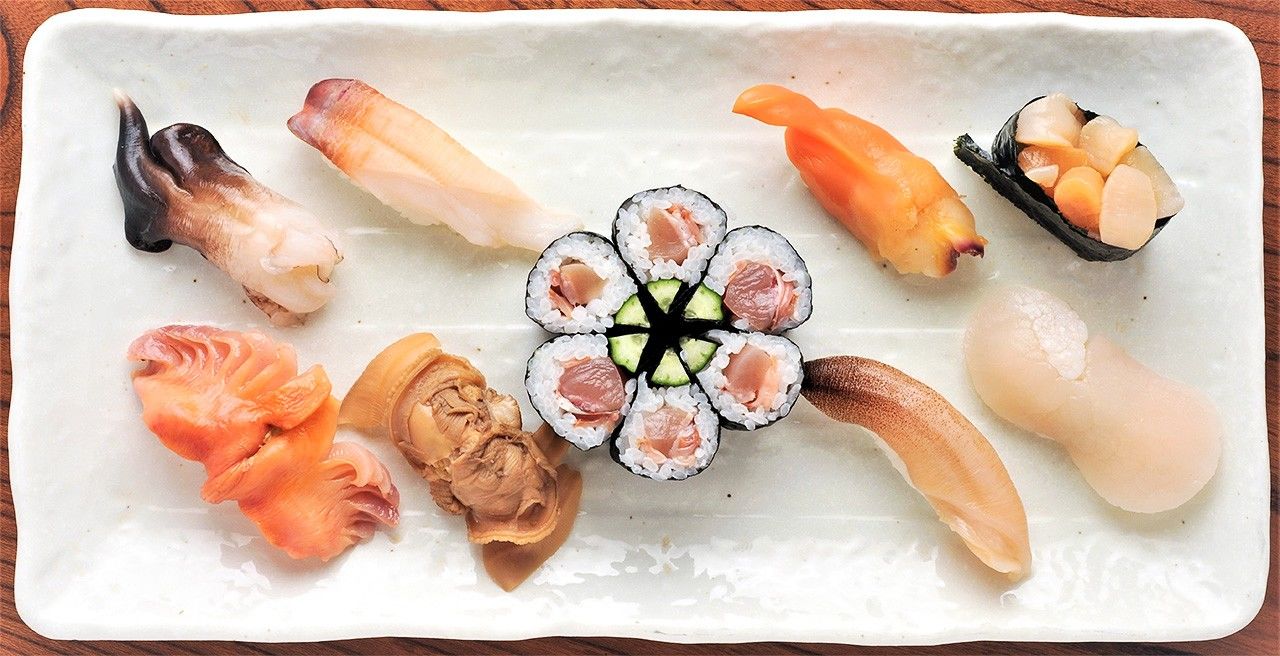
A plate of sushi made from the edible mollusks once plentiful in Tokyo Bay: (center) akagai frill with cucumber; (clockwise from upper left) torigai, honmirugai, aoyagi (bakagai), kobashira (adductor muscles of the aoyagi), tairagi, shiromirugai, hamaguri, and akagai.
The bounty of Tokyo Bay gave birth to other regional specialties as well. The yakihama bentō, a Chiba specialty, is a box lunch featuring grilled hamaguri on skewers, basted with a sweet and savory sauce and served on a bed of rice. It was developed in 1940 from a popular local seaside snack made from freshly dug clams, and it remains one of the region’s best-known and most popular ekiben (railway box meals). Unfortunately, using local hamaguri is no longer a realistic option.
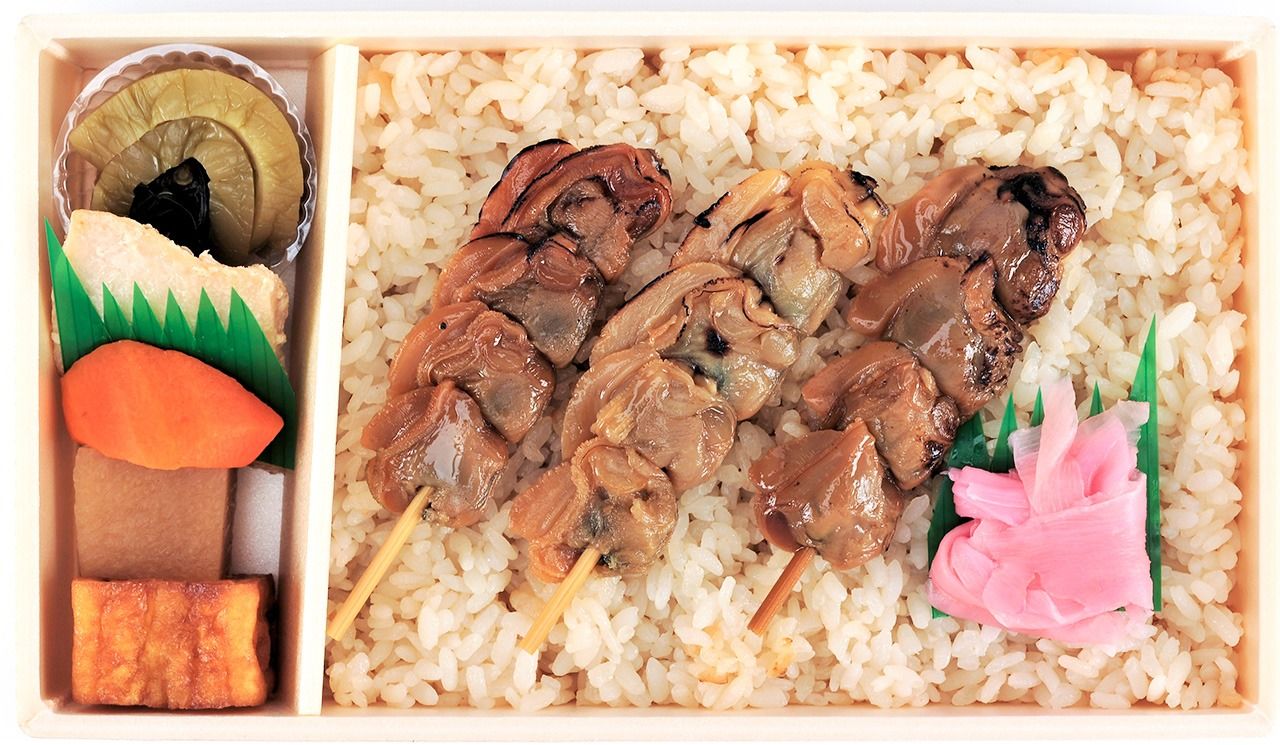
The popular yakihama bentō, a Chiba specialty, is based on a local seaside snack made from freshly dug hamaguri clams, but nowadays the clams are brought in from elsewhere.
Winners and Losers
Akagai and their slightly smaller cousins sarubōgai were the first to disappear as reclamation and pollution destroyed their habitat. The region’s beloved hamaguri clams were the next to go, and other mollusks followed. In their absence, commercial shellfishing in Tokyo Bay focused on the small but tasty asari, a popular ingredient in soup and spaghetti. Asari stocks dwindled gradually at first, then collapsed dramatically a little more than a decade ago. Between 2006 and 2007 the annual catch of asari plunged from 10,100 tons to 326 tons. In recent years the harvest has fluctuated, ranging from 0.5 tons in 2016 to 338 tons in 2017, but there is no sign of a sustained recovery.
Ironically, one of the few bivalves that have flourished amid this devastation is a nonnative species: the quahog or hard clam, long used by Americans to make clam chowder. In 1998, quahogs were found on an artificial beach in Makuhari, Chiba Prefecture. They are thought to have crossed the Pacific as stowaways in the ballast water of cargo ships.
Why have these exotics proliferated in Tokyo Bay, even as native bivalves are disappearing? The key factor seems to be the quahog’s ability to withstand low-oxygen conditions.
Pollution by chemical nutrients can lead to eutrophication and the formation of hypoxic zones, where the action of bacteria on organic matter depletes the oxygen in the water. Hypoxia is incompatible with most marine life, but the quahogs seem to thrive on it, and their range is spreading. They are especially plentiful at Sanbanze, a wetland at the mouth of the Edogawa canal, between Ichikawa and Funabashi in Chiba Prefecture—one of the few tidal flats remaining on Tokyo Bay.
A Shellfishing Renaissance
It was near the end of the 1990s that asari fisherman Sawada Yōichi of Ichikawa, sorting through his catch, came upon some large, pale shells that he had never seen before. He brought a specimen to Chiba Prefectural Fisheries Research Center, where it was identified as Mercenaria mercenaria, better known as quahog or hard clam, a species widely distributed along the coast of North America.
“They told me that people in America eat them, but I was afraid to at first. Screwing up my courage, I zapped one in the microwave, cut it in half, and popped it in my mouth. And it was really good! After that, I told all my fisherman friends, ‘Hey, guess what, you can eat these!’”
Sawada began quahog fishing in earnest around 2005. The clams are found at a depth of around two meters. As when digging for asari, Sawada uses a clam rake with a large steel basket attached. Lowering the implement from his boat, he digs down into the sand about 10 centimeters and drags the rake, shaking the handle to keep the basket from filling with sand and small pebbles.
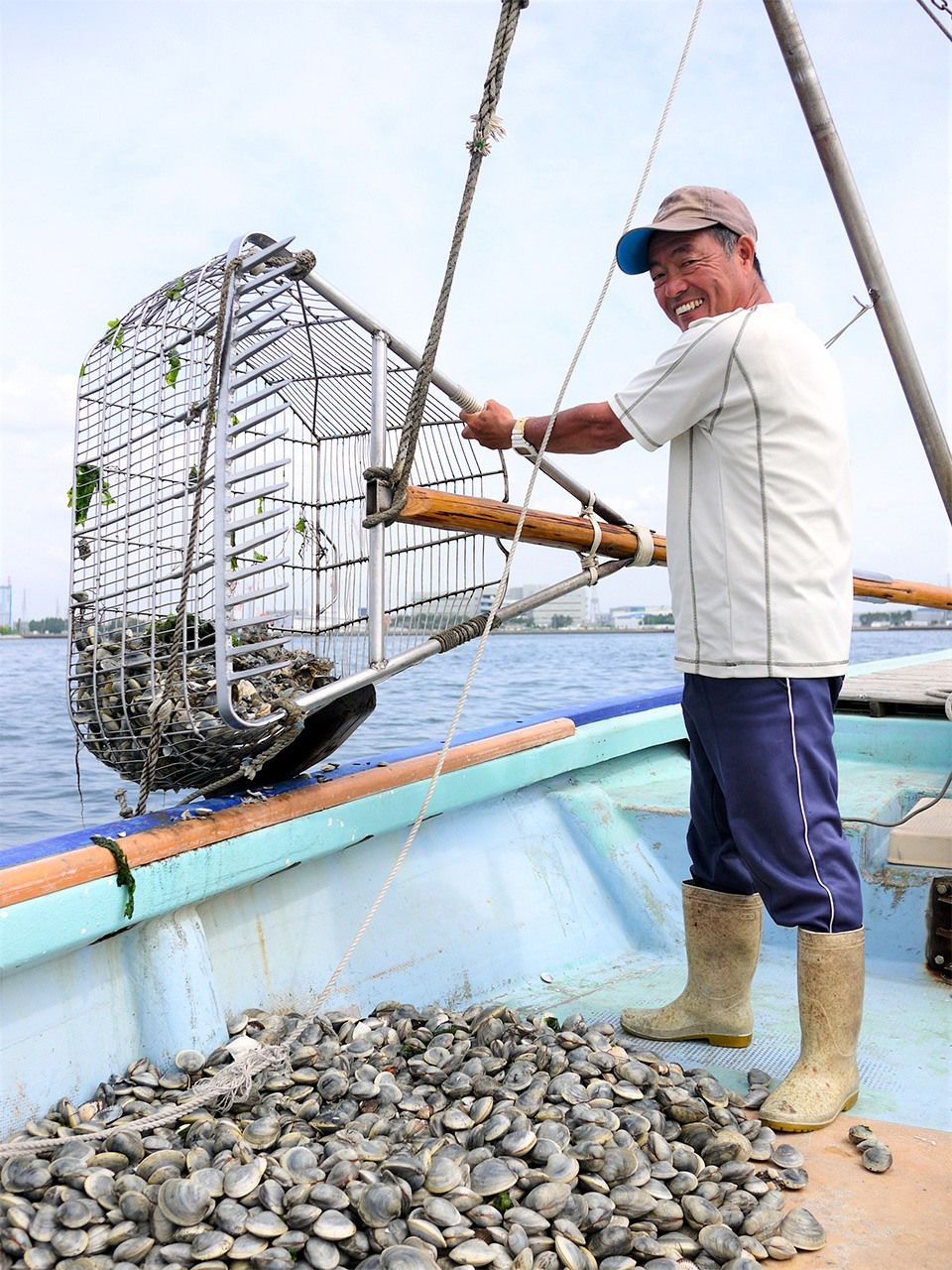
Fisherman Sawada Yōichi uses his boat and a professional-grade clam rake to dig for quahogs off of Funabashi in Chiba Prefecture.
At first there was resistance to the new, exotic species, and it took a while for Sawada to secure the necessary distribution channels. But when people tried them, they liked them. The fishing co-op mounted a PR campaign at the Funabashi fish market, and in time Funabashi restaurants began featuring the quahogs as a “local specialty.” In 2017, Chiba Prefecture officially designated the so-called Sanbanze hard clams as a “Chiba brand marine product.”
From 194 tons in 2008, the catch soared to 1,333 tons in 2016 and 1,676 tons in 2018. Sensing opportunity, younger fishers are getting into the act as well.
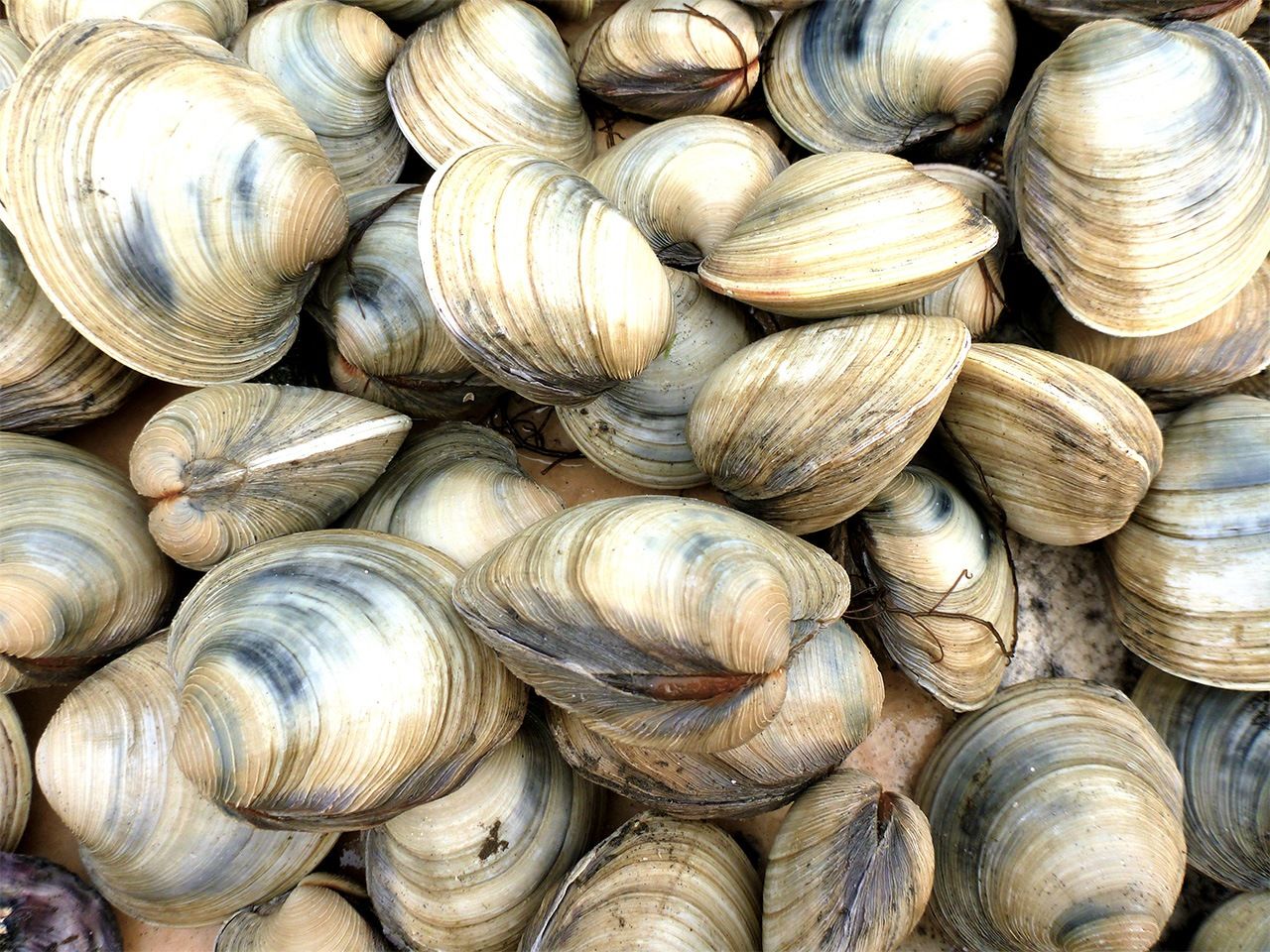
The catch nowadays days is almost all quahog, with an occasional akagai or hamaguri mixed in.
Birth of a “Local Specialty”
In February 2019, the first Japan Clam Chowder Competition was held at the fishing port of Funabashi. A total of 13 local eating and drinking establishments (including restaurants, izakaya pubs, and ramen shops) participated, hawking their Sanbanze clam chowder to visitors at ¥300 a bowl. Despite the winter weather, customers swarmed into the competition venue as soon as it opened at 9:00 am, and some of the stands were sold out by 10:00. Visitors voted for their favorite chowder, using their spoons as ballots.
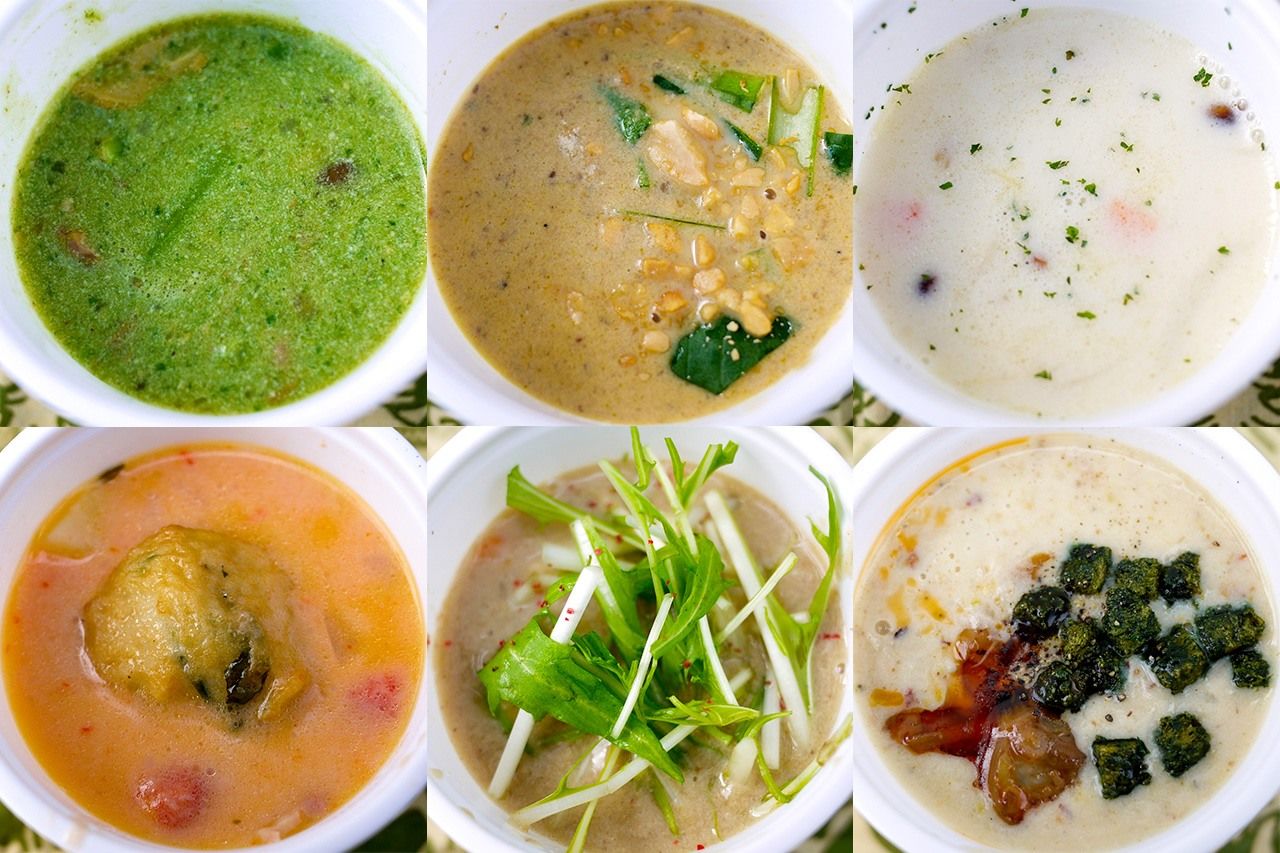
Local chefs showcase their creativity at the first Japan Clam Chowder competition, held in Funabashi in February 2019. All 13 entries were made using Sanbanze hard clams, the local name for the American quahogs that have made a home in Tokyo Bay.
The entries were notable for their diversity and creativity. There were variants on traditional recipes, including creamy New England clam chowder with a hint of miso and tomato-based Manhattan chowder containing fish balls along with the clams. One establishment offered a deep green soup made from locally grown komatsuna (Japanese mustard spinach), while another served up a Thai-style chowder made with coconut milk. My personal favorite incorporated peanuts, another specialty of Chiba Prefecture.
Uchiumi Kintarō, a local seafood wholesaler, chaired the competition’s organizing committee. “A few of us got together and hit on the idea as a way to promote the hard clams as a Funabashi specialty and get them in the national spotlight,” he says. The outcome far exceeded his expectations. “In all my forty years, this is the first time I’ve ever seen 3,000 people gathered at the Funabashi fishing port.” In the wake of the event’s success, he is more convinced than ever of the quahog’s commercial potential.

Uchiumi Kintarō, the young owner of Funabashi seafood wholesaler Kanehachi Suisan, chaired the organizing committee for the first Japan Clam Chowder Competition.
From an environmental standpoint, the rise of the Sanbanze hard clam is scarcely a fairy-tale ending to the saga of Tokyo Bay. The bay’s tidal flats have been dredged, filled in, and covered with concrete revetments, and its biodiversity has been severely compromised as a result. Projects designed to restore the ecosystem by creating artificial wetlands and beaches have made some headway. But returning Tokyo Bay as a whole to its original state may no longer be possible.
Under the circumstances, it is hard to blame the locals for embracing this American stowaway as the face of “Edomae” in the twenty-first century. Let us join with them in taking heart from such small victories, while continuing to work for the rehabilitation of Tokyo Bay.
(Banner photo: The Sanbanze tidal flats on Tokyo Bay in Chiba Prefecture. © Pixta.)
